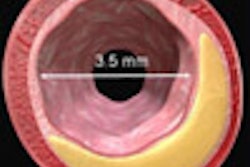The practice of diagnostic medical sonography is well-recognized as being associated with a significant risk for work-related musculoskeletal disorders (WRMSDs). Research shows that 84% of clinical sonographers experience pain related to their profession, and of those, 20% suffer career-ending injuries. In addition, workforce shortages in sonography are affecting productivity, patient care, and reimbursement revenue.
The U.S. Centers for Disease Control and Prevention (CDC) and the National Institute for Occupational Safety and Health (NIOSH) have published a paper on sonography WRMSDs and how they can be prevented. This government document acknowledges that WRMSDs are a problem in the sonography profession, and provides the basis for the CDC to potentially provide funding for prevention research targeted at an acknowledged high-risk population. Other ongoing legislative efforts are also addressing this serious occupational health issue.
In 1970, Congress passed the Occupational Safety and Health (OSH) Act. The purpose of the act "is to assure, as far as possible, every working man and woman in the nation safe and healthful working conditions." Employers are subject to civil and sometimes criminal penalties if they violate the provisions of this act, which is administered by the Occupational Safety and Health Administration (OSHA) of the U.S. Department of Labor.
Congress gave each state the option of creating its own agency to enforce the act. About half the states in the U.S. are regulated by federal OHSA rules, while the other half has created agencies to administer enforcement. California, for example, has a state plan and created its own agency, Cal/OSHA, which enforces safety regulations.
OSHA has a four-pronged comprehensive approach to ergonomics designed to quickly and effectively address musculoskeletal disorders (MSDs) in the workplace. The four segments of OSHA's strategy for reducing injuries and illnesses from WRMSDs are listed below:
Guidelines: OSHA will develop industry- or task-specific guidelines for a number of industries based on current incidence rates and available information about effective and feasible solutions.
Enforcement: OSHA will conduct inspections for ergonomic hazards and issue citations under the General Duty Clause and issue ergonomic hazard alert letters where appropriate.
Outreach and assistance: OSHA will provide assistance to businesses, particularly small businesses, and help them proactively address ergonomic issues in the workplace.
National Advisory Committee: OSHA will charter an advisory committee that will be authorized to, among other things, identify gaps in research to the application of ergonomics and ergonomic principles in the workplace.
In addition to the OSH Act, OSHA enforces detailed regulations, called "standards," which have been written to protect workers from work-related hazards. If no standard applies to a particular hazard, OSHA works to protect the worker by enforcing the General Duty Clause of the OSH Act.
Under the provisions of paragraph 5A(1) in the act, OSHA cites ergonomic disorders. Section 5B of this clause states that each employee shall comply with occupational safety and health standards and all rules, regulations, and orders issued pursuant to this act that are applicable to his or her own actions and conduct.
The language in Section 5B presents the impression that the employee holds significant responsibility for complying with health and safety standards. However, although it appears that OSHA could fine the employee for not complying with health and safety standards, the employer bears most of the responsibility for compliance in the eyes of OSHA.
According to the Department of Labor, 60% of job-related injuries are due to MSDs. Incidents are defined as MSDs when they result in the following:
- Restricted work
- Days away from work
- MSD symptoms that remain for seven or more days
- MSD requiring medical treatment beyond first aid
National statistics for work-related injuries and their costs were published at the time of the OSHA hearings in 2000 and 2001. Many industries believe that these regulations will cost much more than OSHA has estimated. However, costs associated with WRMSDs in sonography have been shown to have a significant impact on the financial viability of imaging departments.
A one-week loss of revenue in sonography pays for one month's salary of a traveler or agency sonographer, based on a 60% reimbursement of the billable amount. A piece of ultrasound equipment shut down for any reason, including worker injury, results in revenue loss that in only one week far exceeds the amount needed to equip a lab with ergonomic equipment including a ergonomically designed exam table and chair that meet the needs of the sonographer, accessory equipment to support the limbs, and sonographer education.
After Congress rescinded the ergonomic rule in 2001, the President Bush's administration and the Department of Labor received a lot of pressure from labor unions to create a way for employees to address their WRMSDs. In response, OSHA created the Alliance Program.
This program enables organizations to work with OSHA to address injuries in the workplace. OSHA and Alliance Program participants work together to reach out, educate, and lead U.S. employers and their employees in advancing workplace safety and health. The Society for Diagnostic Medical Sonography (SDMS) became aware of this program shortly after it was implemented in 2002.
There are many benefits to participating in the Alliance with OSHA. The two-year agreements help organizations to:
- Build trusting, and cooperative relationships with OSHA.
- Network with others committed to workplace safety and health.
- Leverage resources to maximize worker safety and health protection.
- Gain recognition as proactive leaders in safety and health.
In May 2003, SDMS hosted an international consensus conference, with 32 participants representing 27 organizations including delegates from Canada, Australia, and the U.K., to draft industry standards for the protection from WRMSDs for sonography. The industry standards are intended to assist all stakeholders in making informed decisions, and, therefore, included breakout sessions to address the role of employees/employers, educators/accrediting bodies, and equipment manufacturers in reducing the incidence and impact of these injuries on the workforce. Industry standards were successfully written to encompass best practices for the prevention of WRMSDs in sonography, including, but not limited to:
- Equipment design
- Workload/scheduling
- Facility design
- Education/training
The need for accredited programs to include ergonomics and work-injury prevention in their curriculum, as well as certifying agencies to include testing knowledge of risk factors, was also covered. Accredited labs should consider compliance with basic standards of good ergonomics as part of the lab accreditation.
The SDMS applied for participation in the Alliance Program with OSHA, accompanied by a request that OSHA approve its industry standards. The Alliance between OSHA and SDMS was signed in October 2004, along with an OSHA approval of the Industry Standards for the Prevention of Work-Related Musculoskeletal Disorders in Sonography.
This was an important milestone, in that it resulted in the sonography profession now having regulations, recognized by OSHA, available as a reference tool in protecting the worker under the OSH Act. Subsequently, in 2005, the health and safety officer for the U.K. obtained agreement from the SDMS to develop the industry standards further to apply to the sonography profession in that country; in addition, the Australasian Society for Ultrasound in Medicine (ASUM) also adopted the standards.
As part of its OSHA Alliance Program requirements, SDMS is required to work with other Alliance partners who might be able to assist it in reducing injury in sonography. SDMS hopes to work with the Joint Commission on the Accreditation of Healthcare Organizations (JCAHO), which is also an OSHA Alliance partner, to include ergonomic compliance of the ultrasound exam room as part of the JCAHO audit check-off sheet for its inspections. It has been requested that the compliance requirements involve the issues of scheduling, facilities, technique, and education.
The premise is that compliance would simply mean checking the following:
- Staff have received continuing education in ergonomics.
- Ultrasound exam performed with patient on a height-adjustable table.
- Chair is height-adjustable from a sitting position and has a back.
- Patients are scheduled at least 30 minutes apart; add-on patients included.
Furthermore, under the Alliance Program, it is agreed that OSHA and SDMS will work together to achieve the following training and education goals:
Work with OSHA to provide expertise to develop and promote training and education programs on WRMSD issues for the medical ultrasound community.
Work with OSHA to provide expertise in developing information on the recognition and prevention of workplace hazards, and to provide expertise in developing ways of communicating such information to employers and employees in the industry (such as print and electronic media, electronic assistance tools, and OSHA and SDMS Web sites).
Speak, exhibit, or appear at OSHA's or SDMS' conferences, local meetings, or other SDMS-sponsored events such as its annual conference.
"Workers in the medical ultrasound community have a disproportionately high MSD incidence rate and we believe this cooperative effort with SDMS will go a long way toward drastically reducing those injuries," said John Henshaw, OSHA administrator. "I'm confident that by working together, we can improve the health and safety of sonographers."
Other programs are available through OSHA to address work safety. The Voluntary Protection Program (VPP) promotes safety and health at work sites. This program is designed to develop cooperative relationships between management, labor, and OSHA at work sites that have successfully implemented comprehensive work-safety management systems.
The VPP is operated under the authority of OSHA in accordance with the OSH Act, Section (2)(b)1. Employers participating in the VPP have been shown to have reduced injuries and illnesses, resulting in the number of "days away, restricted, or transferred" to be 52% below the average rate for its industry. Fewer injuries and illnesses mean greater profits through reductions in workers' compensation premiums and other costs, as well as increased productivity.
OSHA's Safety and Health Achievement Recognition Program (SHARP) recognizes small businesses that practice successful safety- and health-management systems. Among other things, SHARP recipients are exempt from programmed OSHA inspections during the SHARP certification period.
Much information is available regarding work safety in general, as well as specific hazards relating to sonography. Recommended Web sites include those hosted by OSHA, MedlinePlus, SDMS, and ASUM.
A successful, efficient, and productive ultrasound lab requires the involvement of everyone in the department. Through a team-based environment, employees can be empowered and have ownership in improving the process they perform on a daily basis. Ergonomics programs are most effective when the elements outlined in the program emphasize the following points:
- Participation
- Motivation
- Efficiency
- Effectiveness
Creating a safe working environment for workers requires full cooperation from the entire workforce (managers, supervisors, and staff) for successful completion of the process. Successfully implementing a work-safety program provides the foundation for workers to perform at their best level, thus supporting good patient care and employee retention, while also improving productivity and fiscal outcome.
By Susan L. Murphey and Joan P. Baker
AuntMinnie.com contributing writers
December 25, 2006
Susan L. Murphey is director of operations and Joan P. Baker is director of global marketing at Sound Ergonomics, a Kenmore, WA-based consulting firm specializing in ergonomics for allied health professionals. The company can be contacted at 877-417-8151 or via its Web site.
References
- Pike I, et al. "The prevalence of musculoskeletal disorders among diagnostic medical sonographers." Journal of Diagnostic Medical Sonography. September-October 1997, Vol. 13:5, pp. 219-227.
- SDMS. "Industry Standards for the Prevention of Work-Related Musculoskeletal Disorders in Sonography."
- OSHA. "OSH Act of 1970: Historical Notes."
- OSHA. "OSH Act of 1970: Public Law 91-596; 84 STAT. 1590; 91st Congress, S.2193; December 29, 1970, as amended through January 1, 2004."
- OSHA. "OSH Act of 1970: SEC. 17. Penalties."
- OSHA. "DRAFT: Ergonomics for the Prevention of Musculoskeletal Disorders - Guidelines for Nursing Homes."
- OSHA. "Directives CSP 03-02-002 - OSHA Strategic Partnership Program for Worker Safety and Health."
- OSHA. "OSH Act of 1970: SEC. 5. Duties."
- OSHA. "Voluntary Protection Programs."
- OSHA. "OSHA's Safety and Health Achievement Recognition Program (SHARP)."
Related Reading
Work-site assessments reduce risk exposure and improve productivity, May 17, 2006
PACS: Refining the human-machine interface, October 29, 2004
Tackling ergonomic issues in sonography, September 13, 2004
Managing ultrasound ergonomics, March 26, 2004
A multimedia guide to ergonomic sonographer positioning, September 18, 2002
Copyright © 2006 Sound Ergonomics



















